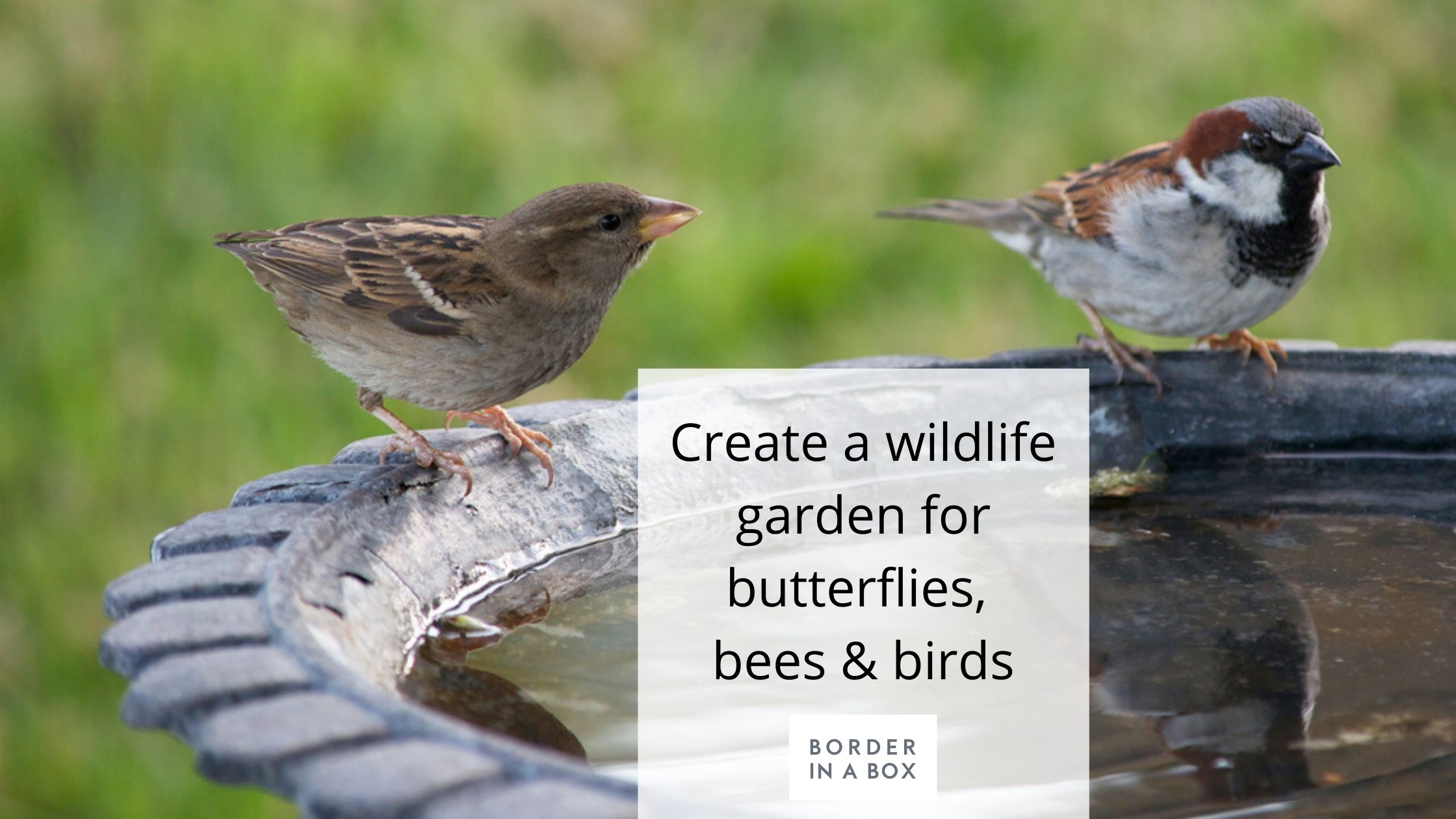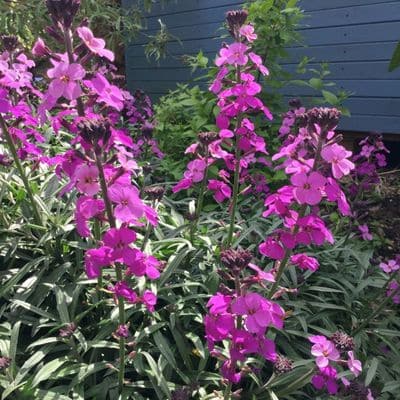Create a wildlife garden for butterflies, bees and birds

Creating a wildlife garden
No matter what size of garden you have whether it’s just a balcony, a pot by the front door or an estate, we need to take care of our wildlife because without them, our plants won’t get pollinated which ultimately means our food source will diminish.
Butterflies –
these are among our prettiest garden visitors, but they’re dwindling in numbers: according to a Butterfly Conservation report published in 2015, The State of Britain’s Butterflies, three-quarters of UK butterflies have shown a 10-year decrease in their population levels.
A top plant to grow for butterflies is Erysimum ‘Bowles’s Mauve’ which is a bushy evergreen perennial with vibrant purple flowers, that blooms all summer long if you dead-head it. It grows to around 75cm tall and likes a sunny spot with well-drained soil. And can be grown in a container too. Other plants they love are Buddleja (commonly known as the butterfly bush), Valerian and Scabious.

Bees –
Although there are plenty of ready-made bug and bee hotels available to buy, you can make your own easily out of hollow sticks. Make sure the holes vary in diameter between 2mm and 10mm, to attract the widest range of species. There are plenty of videos online showing you how to make bug or bee hotels, but you can simply tie sticks together with garden twine and hang in a protected corner of your garden. You could also grow roses, wisteria and beech which the Leafcutter bees use to seal their cells.

Birds –
Feeding the birds used to be a winter activity, but they need our help in the summer months too, to ensure they have enough energy to survive leaner times ahead, such as dry weather when earthworms burrow deeper and wet weather makes foraging difficult. Don’t use fat balls during the summer as they can go rancid very quickly. Don’t use nuts and seeds that are intended for human consumption as they usually contain salt.
Birds love sunflower seeds, so why don’t you grow your own? They’re so simple and create a stunning display. Birds also like fruit, so don’t bin old apples, put them on the ground for ground-feeding birds, or suspend from a tree for others. Always make sure there is a hedge or shrub near the feeding station so the birds can fly into it for safety.

One last tip – remember to put out a saucer of water, especially in hot or dry weather for the wildlife to drink and bathe in. You can add pebbles to make it easier for the bees, and leave it on the ground for the hedghogs to drink too. If the bird bath freezes over in winter, add a ping-pong ball to the surface and this will help stop the water from freezing. Keep all bird baths and feeding stations clean as the harmful bacteria is causing disease in birds which is also leading to the dwindling numbers.

If you need help in creating a wildlife friendly garden, the Butterflies & Bees garden design kit will help you achieve a pretty garden suitable for pollinators and no green fingers required! Here’s the link for more information…
https://borderinabox.com/product/butterflies-bees-ready-made-garden-border/

 Free Delivery
Free Delivery Upgrade to 24 Hour Tracked Delivery
Upgrade to 24 Hour Tracked Delivery

